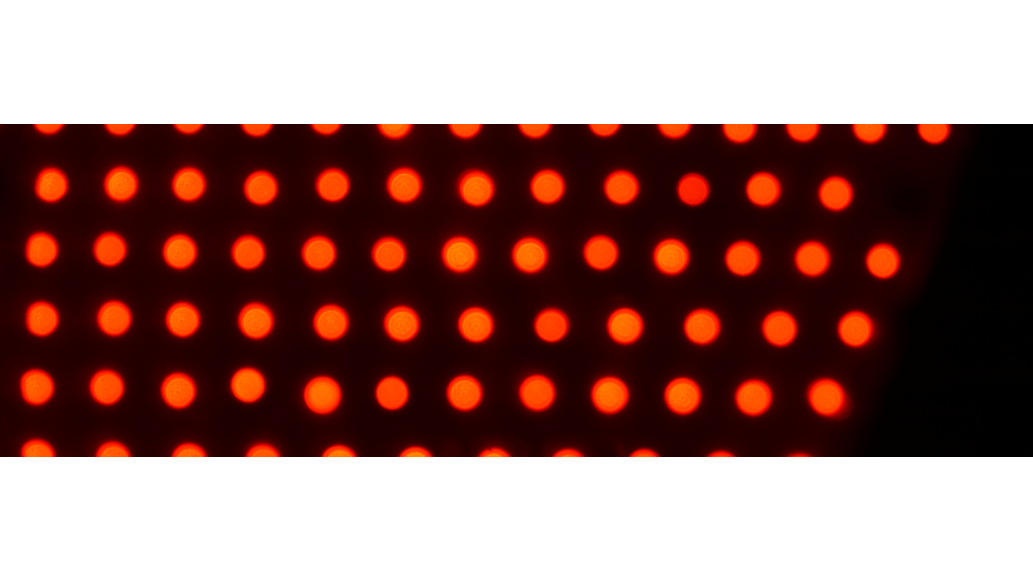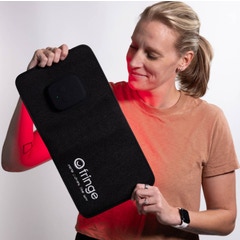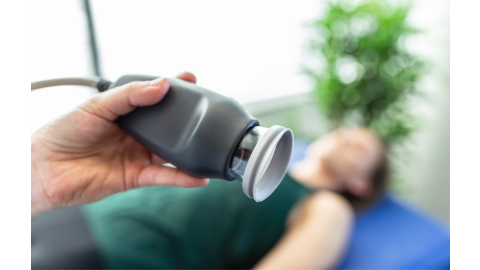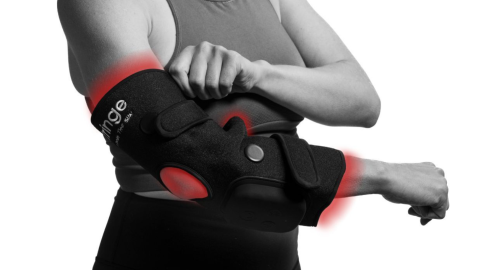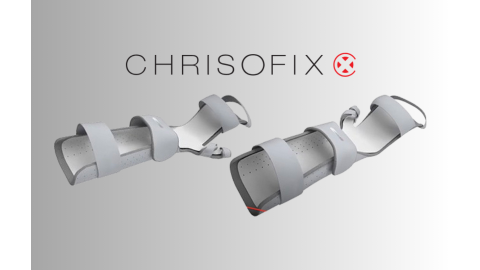Inflammation is one of the most popular topics in healthcare, and rightfully so. It is a hallmark of many diseases currently ravaging modern society, such as arthritis, ulcerative colitis, inflammatory bowel disease, heart disease, diabetes, cancer, Alzheimer’s Disease, and depression. Inflammation is also associated with acute diseases involving the heart, pancreas, liver, and other organs, as well as trauma and infection.
The personal and economic burden of these diseases cannot be overstated. Treatment of inflammation associated diseases makes up the majority of health care spending in the US, costing billions of dollars annually. There are also indirect costs of illness, such as reduced work and productivity. The most common treatments for inflammation are pharmaceuticals, including prescription (such as Celebrex) and the over-the-counter drugs (such as Aspirin and Alleve). However, many of these drugs have serious side effects, such as hypersensitivity reactions and ulcers.
Given these risks, many people are turning to non-invasive therapies to fight inflammation, some of which are highly effective and have far fewer side effects than their pharmaceutical counterparts. One of these is application of red and near infrared light (also called red light therapy or photobiomodulation), which uses light waves at specific frequencies to decrease inflammation at a cellular level.
Shop Red Light Therapy Products
Table of Contents
Red Light Therapy
Inflammation
Red Light Therapy and Inflammation
How To Use Red Light Therapy To Reduce Inflammation
Conclusion
Red Light Therapy
The term “red light therapy” usually describes the application of both red and near infrared light, although only the red light produced by the device is visible to the naked eye. Infrared light can still be perceived by the body as heat when it contacts skin. Red and near infrared light therapy is the application of artificially generated light in the red and near infrared spectral bands.
Red and near infrared light are naturally produced by the sun, which gives off solar radiation. The term radiation describes energy that is transmitted in the form of waves or particles. The spectrum of light in our environment consists of both light we can see (visible light) and light that our eyes can’t perceive (invisible light). This is called the electromagnetic spectrum. The visible light spectrum is quite narrow, consisting of wavelengths that range from 400 to 700nm and span from violet to red in color. Red light is part of this visible light spectrum, while near infrared light is not.
While early research on light therapy used primarily lasers, more recent research has found that LED’s can also be used, which also have the advantage of applying light to a larger area of the body as well as an improved safety profile. The use of LED in red/near infrared light therapy devices has also greatly reduced the cost of treatment, making it something that can be done in the comfort of one’s own home.
Learn more about red light therapy with our other article.
Inflammation
The inflammatory process is mediated by the immune system, specifically the innate (or non-specific) component. Inflammation protects the body from injury and infection. There are many goals of the inflammatory response, including reducing the extent of injury, limiting the spread of infection, and restoring the body back into balance. While we mostly think of inflammation as being harmful, it’s actually a natural and essential physiological function. Inflammation becomes harmful when it is uncontrolled, lasts for a long time, or just generally occurs when it shouldn’t.
There are three types of inflammation, which are mainly defined by their length. Acute inflammation is short term, lasting days. This is what happens when you sprain your ankle, and it swells up, becomes warm, and may show color changes. That response is designed to limit movement, which prevents further injury and allows the damaged tissue to heal. Sub-acute inflammation lasts from two to six weeks, and often follows acute inflammation as healing progresses. The response here is similar, but less intense, than acute inflammation. Chronic inflammation lasts for months or even years, and at this point, inflammation has ceased to be a normal (and healthy) response to a stimulus and has become pathological.
Chronic inflammation is the type that is associated with most diseases. It is also associated with oxidative stress. Chronic inflammation is not associated with visible signs of inflammation (such as redness, heat, and swelling), so people often aren’t even aware it is happening. This contrasts with acute inflammation, which is usually visible and occurs because of trauma or infection.
Red Light Therapy and Inflammation
As described by Dr. Michael Hamblin, former Associate Professor at Harvard Medical School, “one of the most reproducible effects of [light therapy] is an overall reduction of inflammation”. Studies have found that light therapy affects levels of many molecules involved in inflammation, including reactive oxygen species, reactive nitrogen species, and prostaglandins. Studies have even found that light therapy may reduce inflammation in the brain, known as neuroinflammation.
Red light therapy may have anti-inflammatory effects in the following conditions:
Brain Disorders – Neuroinflammation is one of the foundational pathologies underlying a wide range of brain disorders. Research has found that light therapy may decrease inflammation in Alzheimer’s Disease, as well as improve cognitive function. Several clinical trials have been published which have shown positive results. Most studies have exclusively used near infrared light, which has been found to penetrate more deeply into the brain. Research has also shown that near infrared light therapy may decrease inflammation and improve recovery after a stroke. When used to treat brain disorders, light therapy is usually applied to the head area, using devices such as hats and helmets.
Traumatic Brain Injury - Traumatic brain injuries (TBI) occur when there is a violent blow to the head. Approximately 17% of people with repeated TBI progress to chronic traumatic encephalitis (CTE), a brain disorder caused by repeated head injuries. Concussions are another common type of TBI. TBI’s result in acute neuroinflammation, which can become a chronic problem if not treated properly. Research using light therapy (both red and near infrared) for TBI has looked at both immediate and chronic effects in animal and human models. Animal studies have shown a reduction in the size of the brain lesion when light therapy was applied to the head immediately following trauma, which correlated with the severity of neurological symptoms and may be due (in part) to decreased inflammation.
Depression – Neuroinflammation is similarly found in people suffering from depression, and it is thought to be a key factor and therapeutic target in depressive disorders. Several clinical trials of light therapy in depression have been conducted, all of which used near infrared light applied directly to the head. A 2022 systematic review concluded that light therapy “can be classified as strongly recommended for moderate grade of major depressive disorder”. Similarly, a 2023 meta-analysis concluded that there is a “promising role of [near infrared light therapy] in the treatment of depressive symptoms”.
Gut Disorders – Inflammatory gut diseases like colitis and inflammatory bowel diseases may benefit from red light therapy. Research has found that application of red light to the abdomen of rats with experimentally induced colitis (a form of inflammatory bowel disease) improved many markers of gut health, including reducing inflammation. There is interest in studying the use of light therapy to improve gut health in human subjects as well, with research currently ongoing to see if it helps patients with inflammatory bowel disease. When treating gut disorders, light therapy is usually applied directly to the abdomen.
Pain - Pain creates a huge burden of disability, both personal and economic. There is scientific evidence that red light therapy decreases many types of pain, including knee, neck, low-back, temporomandibular joint, and post-surgical pain. Research also suggests that red light therapy may reduce pain associated with arthritis and fibromyalgia. One of the primary mechanisms of pain reduction by light therapy is by decreasing inflammation. Red light therapy may also reduce pain by decreasing oxidative stress, reducing the sensitivity of neurons, and decreasing the transmission of pain related nerve impulses.
Arthritis – In addition to reducing arthritis pain by decreasing inflammation, the anti-inflammatory effects of red light therapy on arthritis also yields other benefits. Inflammation in arthritis is responsible for much of the observed pathology, including cartilage breakdown. Treatment with red light therapy may have a range of positive effects, such as preserving joint function, avoiding joint deformities, and reducing drug side effects and toxicities.
Delayed Onset Muscle Soreness – Delayed onset muscle soreness (DOMS) is pain that occurs in the muscles between 12 and 24 hours after a workout. DOMS is caused by tiny muscle tears that results in inflammation, which causes pain. Treatment with red light therapy to muscles after a strength training session may decrease markers of inflammation, decrease fatigue, and increase protein synthesis.
Injury – In addition to its anti-inflammatory effects on muscle tissue, including speeding recovery from post-exercise damage, red light therapy may also reduce inflammation and speed wound healing, such as from burn injuries. Red light therapy may also reduce inflammation and speed healing from injuries to bone, including fractures and more complex bone injuries that require the use ceramic materials. Tendon injuries may also benefit from red light therapy.
Skin Disorders – Many skin disorders are characterized by inflammation, including acne, psoriasis and eczema. Light therapies may improve acne through anti-inflammatory and antimicrobial effects, and by decreasing the production of oil. Inflammatory acne is more responsive to light therapy than non-inflammatory acne, and studies have even found it to be superior to some medications. Red and near infrared light may also improve psoriasis, in part because of its anti-inflammatory effects. And in eczema, an inflammatory skin disease, application of near infrared light therapy may decrease skin itching and lesions.
Alopecia Areata – Alopecia Areata (AA) is an autoimmune disease that causes the body to attack its own hair follicles. This causes the hair to fall out, resulting in patches of baldness. AA can affect hair on any part of the body but is most common on the head. It is characterized by inflammation around hair follicles during the growth phase. The anti-inflammatory effects of light therapy may decrease this inflammation. In fact, application of red and near infrared light has been found to increase hair growth in bald patches.
How To Use Red Light Therapy To Reduce Inflammation
There is no single right way to use red light therapy to reduce inflammation. It all depends on what condition you are trying to treat and what your personal preferences are as far as treatment approach. The following are a few simple questions that can be used to guide you towards selecting the device that is most suitable for your needs:
1. What are your specific health concerns? Red light is usually applied to the affected body part, either directly in contact with the skin or at a distance of around 4 to 12 inches away. Some devices are location specific, such as knee wraps, head wraps or helmets, shoulder and neck wraps, or elbow and wrist red light wraps. Other devices are non-specific, such as square or rectangular light wraps, or red light panels. If you are dealing with a single, region-specific concern – such as knee arthritis or Alzheimer’s Disease - you may prefer to get a regionally targeted red light therapy device. However, if you are dealing with inflammation in more than one area of the body and want a device that can be used in multiple locations, a non-specific wrap may be preferable. Red light panels can also be used to address multiple body parts, although they may be difficult to position properly for some locations, such as the feet and ankles.
2. What are your preferred treatment conditions? Sessions using red light panels are most often done in a seated position, with the panel oriented towards the face, neck, torso, or other affected body part. They can also be done in a standing position, although this is not as relaxing. Lying down is possible if the treatment location allows it. Red light panels are wired and require the user to stay in the same position throughout the duration of the treatment. In contrast, sessions using red light wraps can be done in any position, including standing, sitting, and lying down. They can even be worn while moving around. Some red light wraps are wired, while others are wireless, with wireless models providing more flexibility.
3. What device specs should you look for? At home red light therapy devices almost always use LED’s as the light source. However, they do vary in other parameters, such as light wavelength(s) and intensity. When it comes to choosing the optimal wavelengths, you should look for light in the red and/or near infrared spectrums - but avoid the range of 700-780nm which has been found to be ineffective. Multi-wavelength devices including both red and near infrared light may be the most versatile. In terms of intensity, it has been found that it is ideal to mimic the intensity of the sun, which is around 24 mW/cm2 at the skin. This is described as the “sweet spot” between higher intensities, which can have harmful effects, and lower intensities, which will have no effect at all. Many devices on the market are at a much higher intensity than the sun, so choose a sun-mimicking product and don’t overdo it when it comes to session frequency and duration.
Conclusion
Research suggests that red light therapy (with red and near infrared light) may reduce inflammation in a wide range of diseases, both acute and chronic. There are very few contraindications to red light therapy, and it can be safely used at home as part of a regular wellness regime. Choose a device that suits your needs and preferred treatment conditions, and which delivers both red and near infrared light at an appropriate intensity. Combine red light therapy with an anti-inflammatory diet and supplements, regular exercise, stress management, and good sleep hygiene for best results.
Shop Red Light Therapy Products
Medical Disclaimer: The information provided on this site, including text, graphics, images, and other material are for informational purposes only and are not intended to substitute for professional medical advice, diagnosis, or treatment. Always seek the advice of your physician or other healthcare professional with any questions or concerns you may have regarding your condition.








 France
France Australia
Australia